FiberMaxxing: Journey to Better Gut Health in 2025
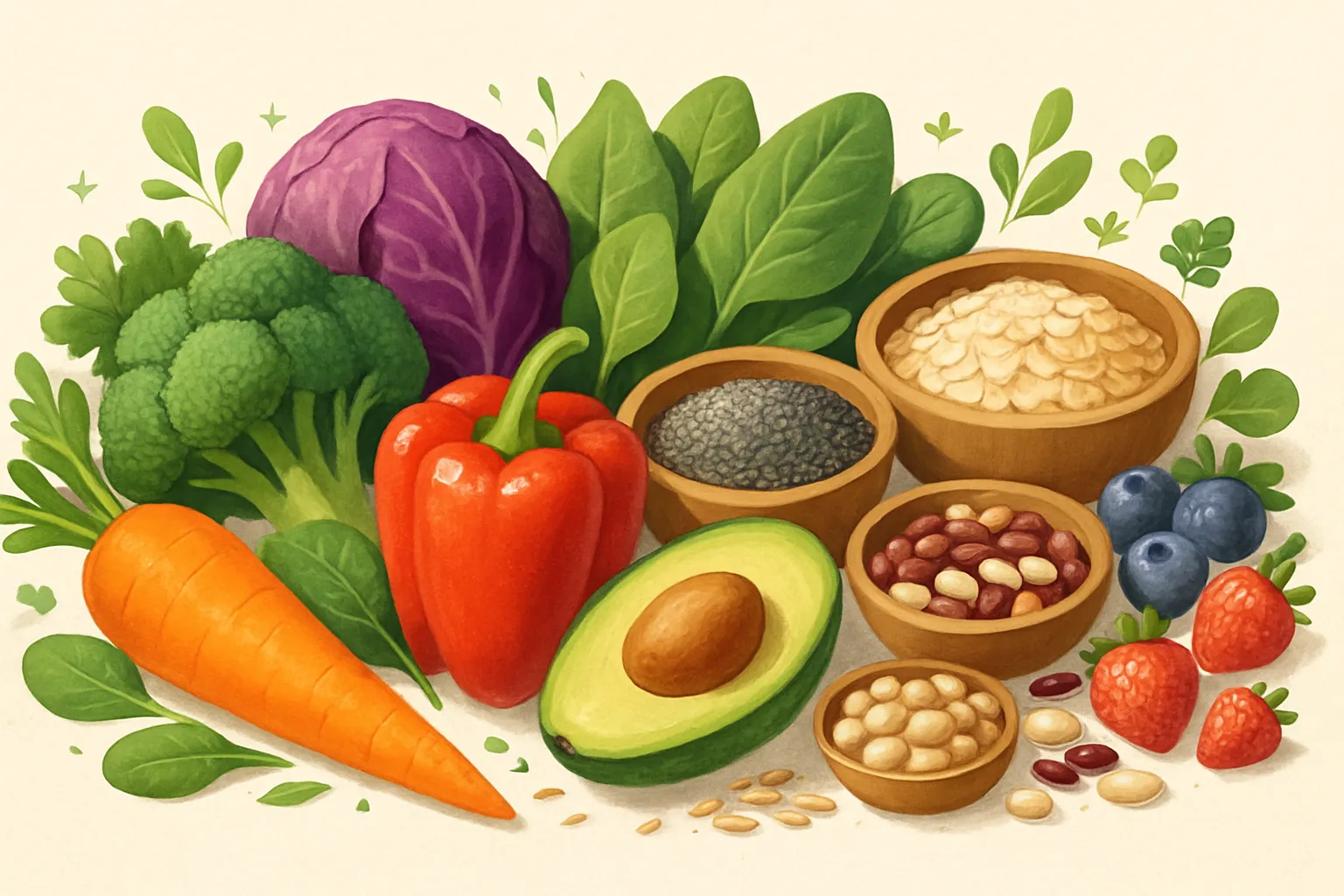
Have you ever wondered why your energy crashes at 3 PM despite eating what you thought was a healthy lunch? 🤔
TL;DR - FiberMaxxing Guide
• Who it's for: Anyone struggling with afternoon fatigue, irregular digestion, and wanting to improve long-term health through nutrition
• Main outcomes: Steady energy all day, improved digestion, reduced disease risk by 30-50%, and better gut health within weeks
• Key steps: Assess current fiber intake → Gradually increase by 5g weekly → Track with NutriScan meal scanning → Reach 30-35g daily target
• Timeline: Energy improves within 2 weeks, digestive benefits within 3 weeks, significant health markers improve within 3 months
• Essential tool: NutriScan app for accurate fiber tracking and comprehensive nutrition analysis across any cuisine
That was me six months ago, struggling with afternoon fatigue, irregular digestion, and a general feeling that something was missing from my diet. Then I discovered FiberMaxxing - a trending approach to high-fiber nutrition that's backed by science and transformed how I think about gut health and food.
The Question That Changed Everything 🧐
Have you ever wondered why your energy crashes at 3 PM despite eating what you thought was a healthy lunch? That was me six months ago, struggling with afternoon fatigue, irregular digestion, and a general feeling that something was missing from my diet. Then I discovered FiberMaxxing - a trending approach to high-fiber nutrition that's backed by science and transformed how I think about gut health and food.
 Starting your FiberMaxxing journey with fresh, nutritious choices
Starting your FiberMaxxing journey with fresh, nutritious choices
Real Stories from My FiberMaxxing Experience 📖
Sarah's Wedding Wake-Up Call My friend Sarah called me in tears last month. At 32, she'd just learned her uncle was diagnosed with colon cancer - the fourth person in her social circle under 40 with the diagnosis. "I need to change something," she said. I introduced her to FiberMaxxing and helped her use NutriScan to track her fiber intake. Within three weeks, she went from consuming 8 grams daily to hitting the recommended 25 grams. Her energy improved, her skin cleared up, and most importantly, she felt empowered about her health choices. She now logs every meal using NutriScan's camera feature, watching her NutriScore improve from yellow to dark green.
The Office Lunch Revolution My colleague Mike from our Singapore branch used to mock my colorful tiffin boxes filled with dal, quinoa, and vegetables. "Why eat rabbit food?" he'd joke while unwrapping his processed sandwich. But when his doctor warned him about pre-diabetes markers during his annual checkup in June 2025, Mike asked for help. I showed him how to scan his meals with NutriScan, revealing his daily fiber intake was just 5 grams - the app's micro-nutrient breakdown made this crystal clear. Now he's the one bringing elaborate Buddha bowls to work, proudly showing his NutriScore improvements in the app's Community section where he's climbed to rank 15 out of 50 users in just eight weeks.
My Personal Transformation Journey I started my FiberMaxxing path after reading February 2025 research showing that 95% of adults globally don't meet daily fiber recommendations. As someone who considered myself health-conscious, I was shocked to discover through NutriScan that I was averaging only 12 grams daily - the app's detailed nutrition breakdown exposed this gap clearly. The pie chart on my home screen showed my fiber intake in red, indicating I was far below target. Three months later, I consistently hit 35-40 grams daily, my digestive issues have vanished, and I haven't experienced that dreaded afternoon crash since May. My NutriScan calendar view shows a beautiful pattern of dark green days now.
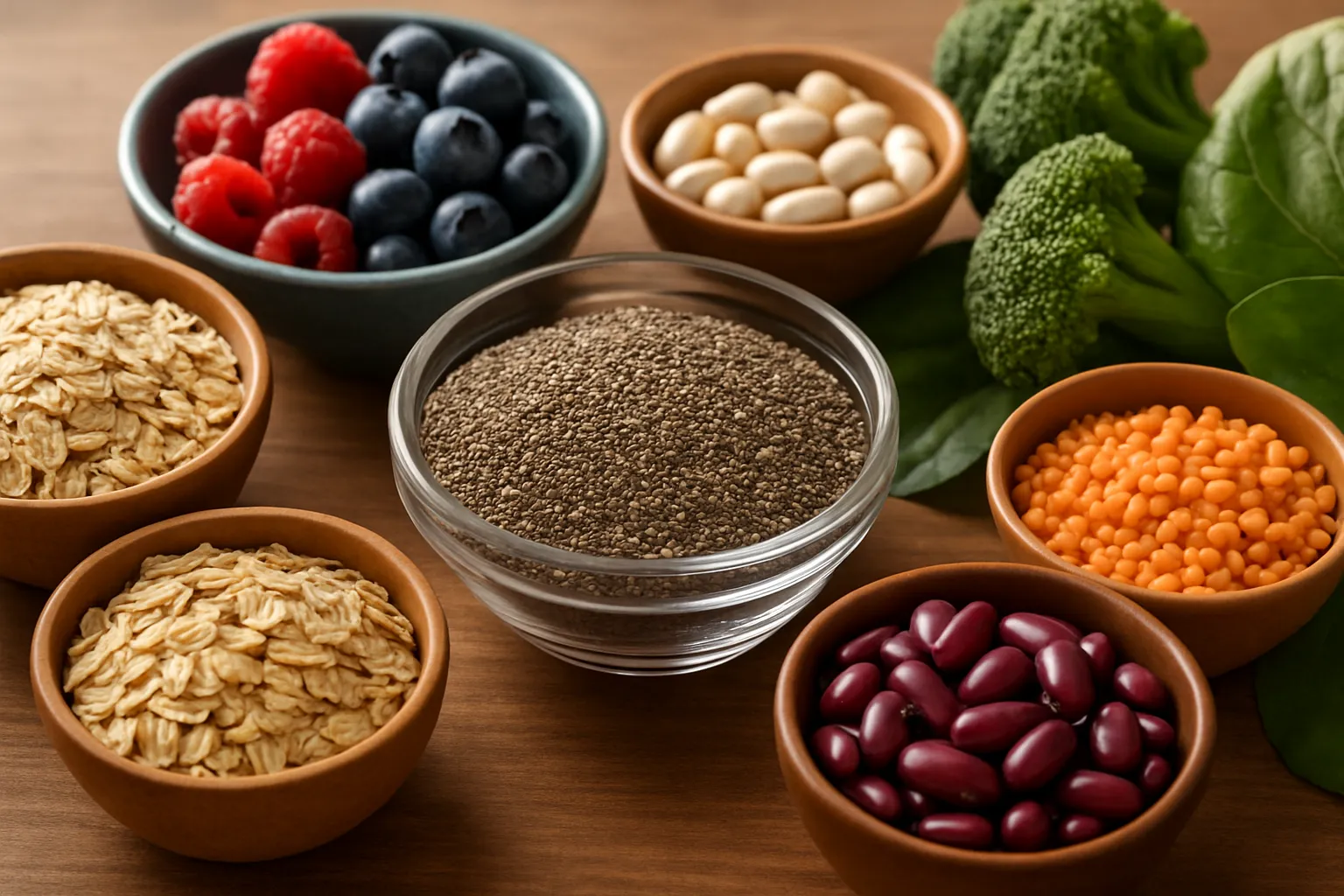 Essential FiberMaxxing foods: chia seeds, legumes, whole grains, and fresh vegetables
Essential FiberMaxxing foods: chia seeds, legumes, whole grains, and fresh vegetables
Surprising Facts About Fiber and Your Body 🔬
Did you know that fiber acts like a sponge in your digestive system, absorbing up to 10 times its weight in water? This property explains why increasing fiber without adequate hydration can actually cause constipation - a mistake I made in my first week of FiberMaxxing that NutriScan's water tracking helped me correct.
Here's what amazed me: August 2025 research from Memorial Sloan Kettering Cancer Center shows that just 7 additional grams of daily fiber can reduce colorectal cancer risk by 9%. When I learned that cancer rates in people under 55 have doubled since 1995, reaching 20% of all new diagnoses, I understood why FiberMaxxing has become such a powerful global movement from Tokyo to Toronto.
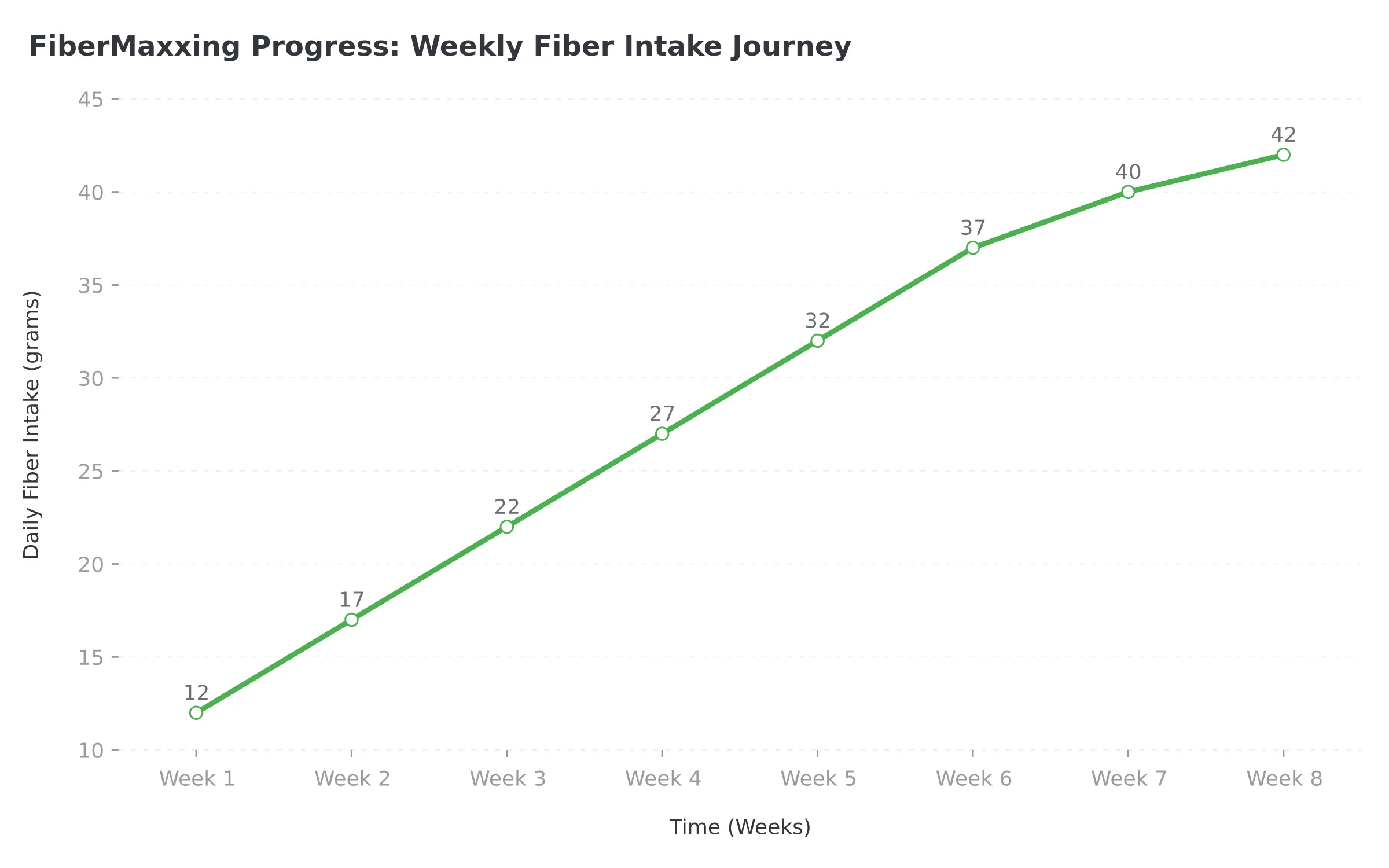 Figure 1: My 8-week FiberMaxxing journey from 12g to optimal 42g daily intake
Figure 1: My 8-week FiberMaxxing journey from 12g to optimal 42g daily intake
The gut microbiome connection left me speechless. Scientists at Stanford University (published July 2025) discovered that fiber feeds beneficial bacteria producing short-chain fatty acids - compounds that influence everything from immune function to mental clarity. No wonder I felt mentally sharper after increasing my fiber intake! Studies show these changes happen within just 14 days of dietary modification, which I tracked daily using NutriScan's Insights feature.
I was stunned learning that our ancestors across all continents - from African tribes to Asian farmers - consumed 50-100 grams of fiber daily, while modern diets average just 15 grams globally. This dramatic reduction coincides with rising rates of digestive disorders, diabetes, and heart disease. It's like we've been starving our gut bacteria for three generations.
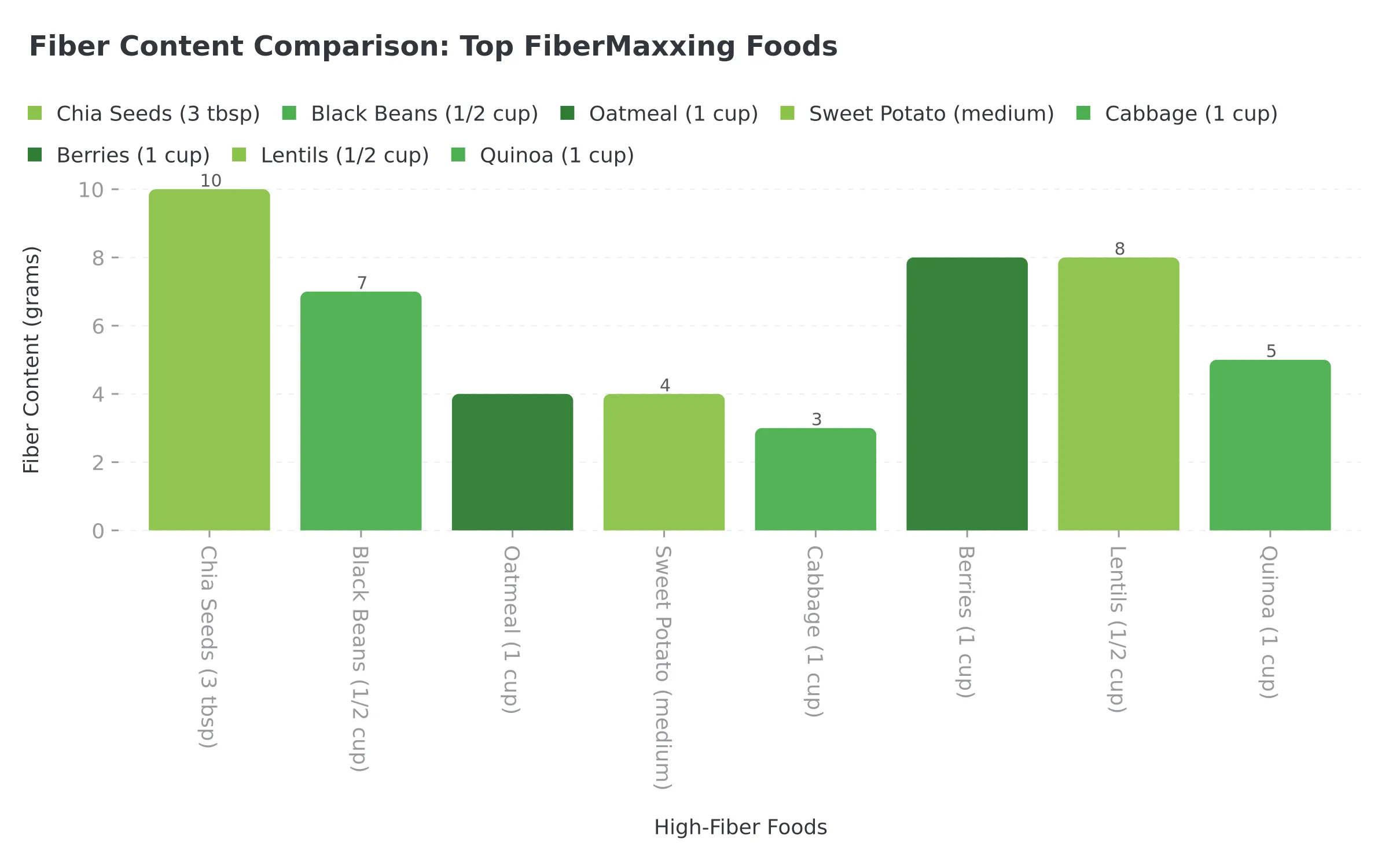 Figure 2: Fiber content comparison of essential FiberMaxxing foods to optimize your daily intake
Figure 2: Fiber content comparison of essential FiberMaxxing foods to optimize your daily intake
My Top Tips for Successful FiberMaxxing 💡
1. Start Your Day with Chia Power 🌟 I begin every morning with a chia seed pudding containing 10 grams of fiber. Mix 3 tablespoons (45ml) of chia seeds with coconut milk the night before, add local seasonal fruits in the morning, and you've already met one-third of your daily goal. I track this breakfast in NutriScan using the camera feature, and the app automatically recognizes the ingredients, showing me exact fiber content in the micro-nutrients section.
2. The Cabbage Swap Strategy Replace lettuce with shredded cabbage (or bok choy for Asian dishes) in sandwiches and salads. Cabbage provides 3 times more fiber and stays crunchy longer. I discovered this trick when NutriScan's nutrition breakdown revealed iceberg lettuce contains less than 1 gram of fiber per cup versus cabbage's 3 grams.
3. Bean Banking Method 🥘 I cook large batches of mixed legumes every Sunday - black beans, chickpeas, red lentils, and mung beans - freezing them in 200-gram portions. Adding half a cup (120ml) to any meal instantly boosts fiber by 6-8 grams. The app's "Copy Meal to Today" feature saves me logging time when I eat these same bean dishes throughout the week.
 Meal prepping with high-fiber ingredients: the foundation of successful FiberMaxxing
Meal prepping with high-fiber ingredients: the foundation of successful FiberMaxxing
4. The Sweet Potato Side Hustle Keep roasted sweet potato (or purple yam) cubes in your fridge. They're perfect for adding to any meal and provide 4 grams of fiber per medium potato (150g). I love how NutriScan's portion adjustment feature with plus/minus buttons lets me accurately track whether I've eaten half or a whole potato.
5. Smoothie Fiber Bombing 💪 Add frozen cauliflower rice or white beans to fruit smoothies - you won't taste them, but you'll get an extra 3-5 grams of fiber. I was skeptical until trying it; now it's my secret weapon. NutriScan's manual logging with voice input makes tracking these custom smoothies effortless.
6. The Overnight Oats Revolution Prepare five jars of overnight oats on Sunday with different toppings - walnuts, almonds, dates, figs, and seasonal fruits. Each jar contains oats, ground flaxseed, and fruits for 12 grams of fiber. NutriScan's "Start Daily Repeat" feature helps me track this recurring breakfast automatically across selected weekdays.
7. Snack Smart with Seeds Keep small containers of pumpkin seeds (pepitas) and sunflower seeds at your desk. A handful (30g) provides 2-3 grams of fiber plus healthy fats. The app's barcode scanning works great for packaged seeds, instantly showing nutritional content.
 The joy of preparing nutritious, fiber-rich meals for better health
The joy of preparing nutritious, fiber-rich meals for better health
Your Step-by-Step FiberMaxxing Guide 📋
Step 1: Assess Your Current Intake (Days 1-3) Download NutriScan if you haven't already and commit to tracking everything for three days without changing your diet. Use the camera feature to scan each meal - the AI recognizes food items from any cuisine and calculates fiber content automatically.
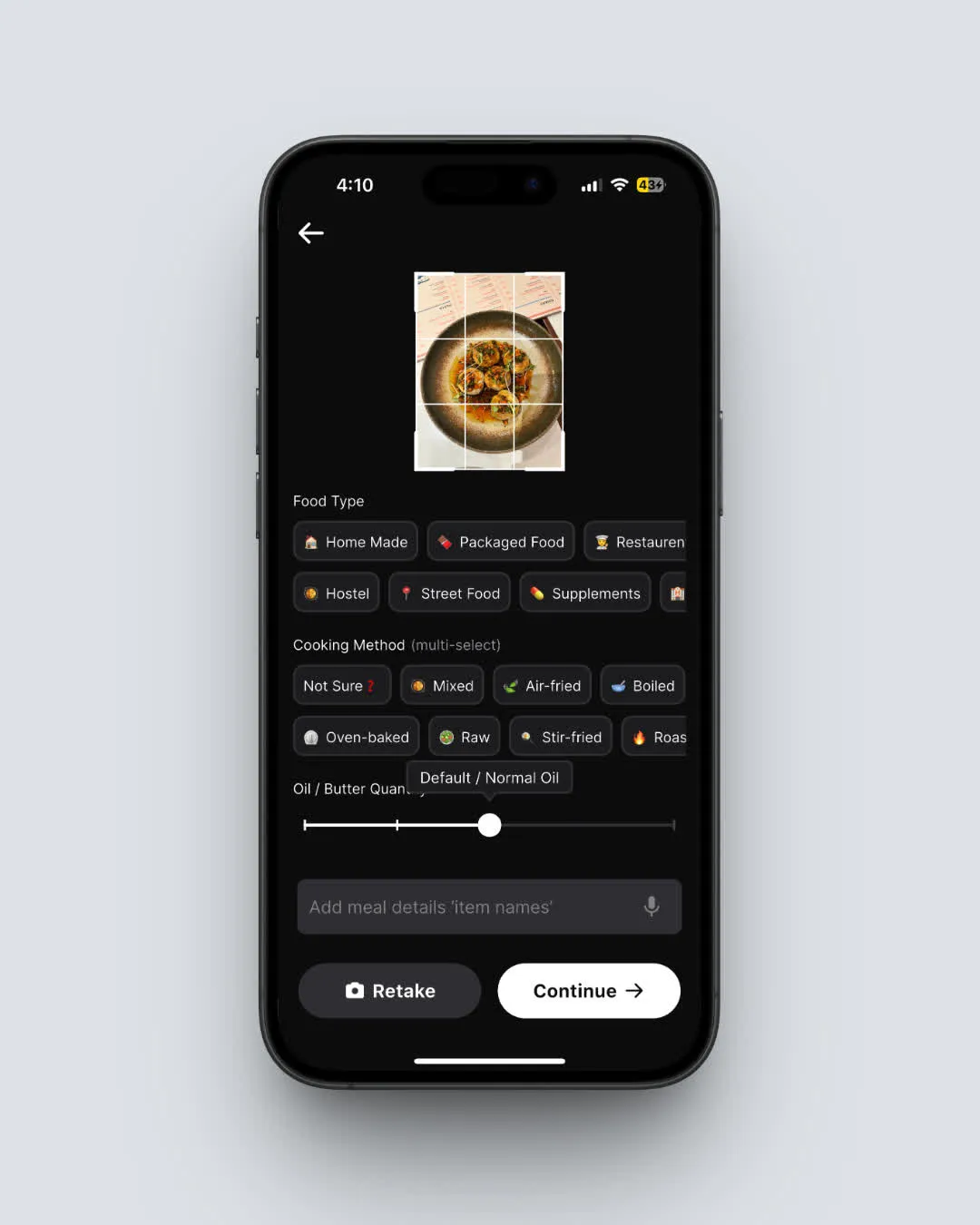 Home > Camera Icon > Crop Picture - NutriScan's AI-powered meal scanning interface
Home > Camera Icon > Crop Picture - NutriScan's AI-powered meal scanning interface
After your second meal scan, you'll see a food preference form popup that helps personalize your experience. Pay special attention to the "Fiber" measurement shown as the first item in the Top 4 Micro Nutrients section of each meal's nutrition details.
 Meal Details > Nutrition Analysis - Detailed fiber tracking in the Top 4 Micro Nutrients section
Meal Details > Nutrition Analysis - Detailed fiber tracking in the Top 4 Micro Nutrients section
Most people discover they're consuming less than 15 grams daily - I was shocked to find I averaged just 12 grams.
Step 2: Set Your Personal Target (Day 4) Based on your baseline assessment, increase fiber intake by exactly 5 grams per week - no more, no less. If you're starting at 10 grams, aim for 15 grams in week one, 20 grams in week two, continuing until you reach 30-35 grams. Premium subscribers can use NutriScan's Diet Plan feature to set custom daily targets based on their health goals (weight loss, muscle gain, or specific conditions). The app displays your progress through the pie chart on the home page, with red indicating when you're below target and green showing success.
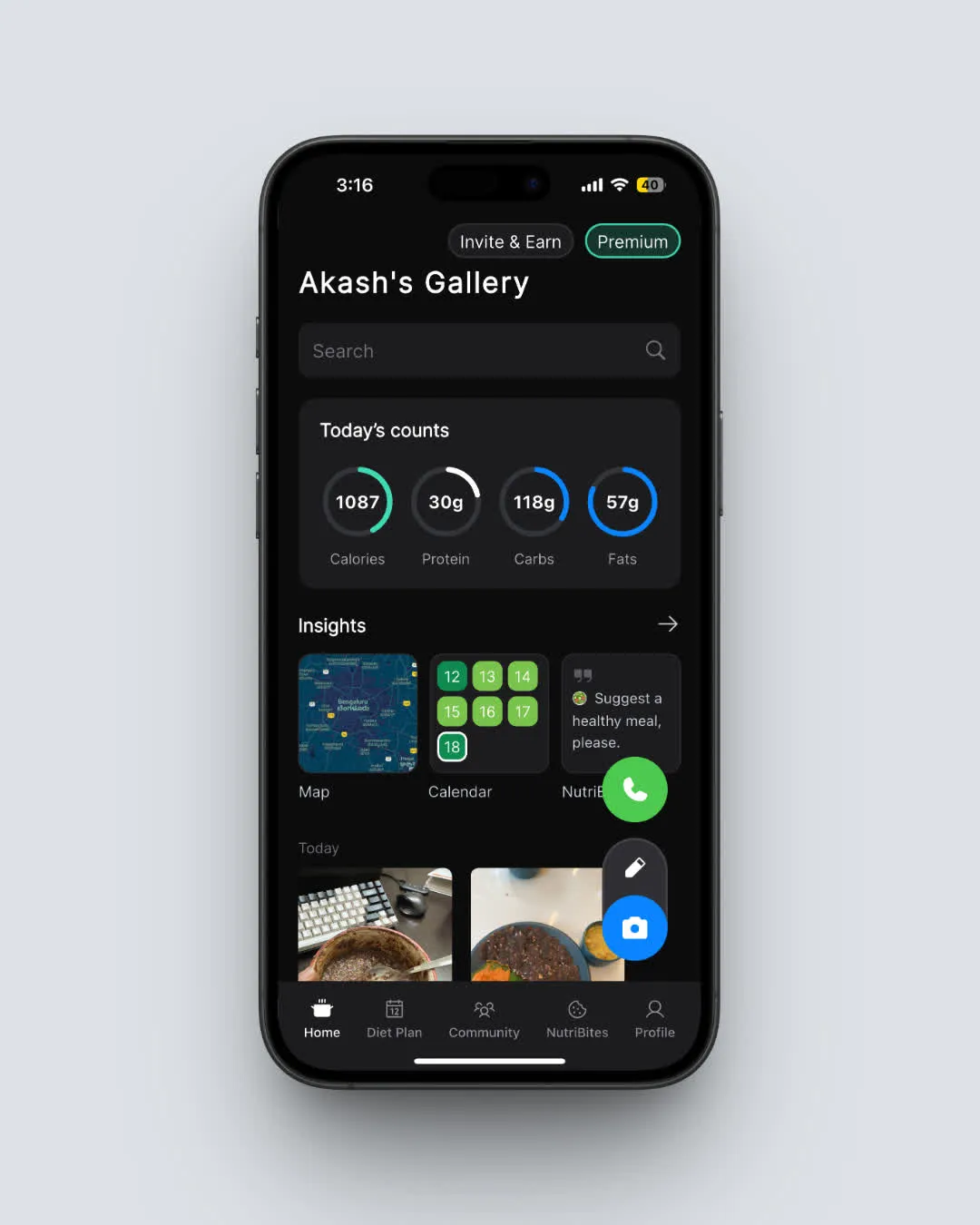 Home Page - Daily nutrition overview with fiber progress tracking and NutriScore
Home Page - Daily nutrition overview with fiber progress tracking and NutriScore
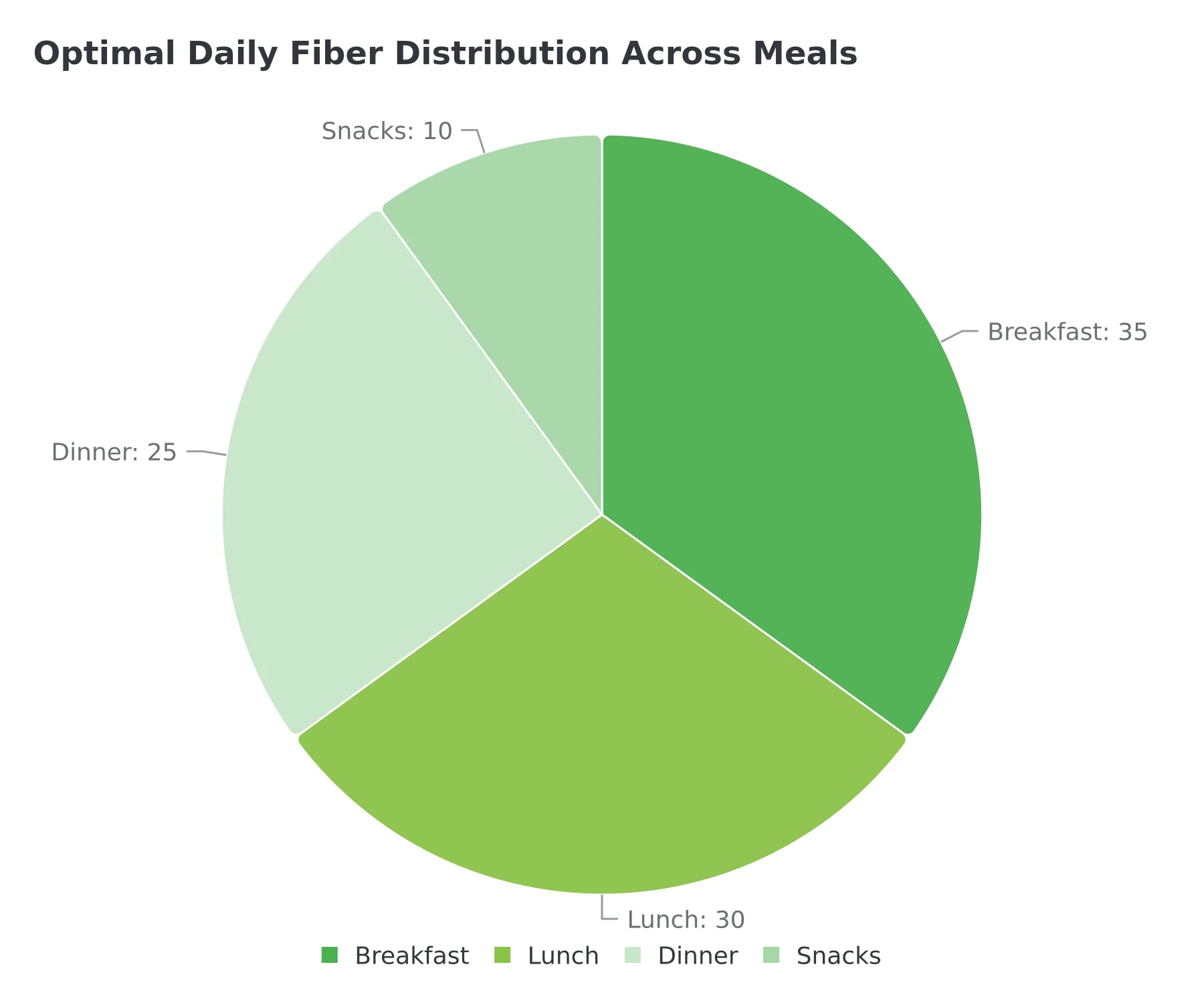 Figure 3: How to optimally distribute your daily fiber intake across meals for best results
Figure 3: How to optimally distribute your daily fiber intake across meals for best results
Step 3: Master the Morning Routine (Weeks 1-2) Focus exclusively on breakfast for the first two weeks. Create a high-fiber morning ritual combining oatmeal (4g per cup), chia seeds (10g per 3 tablespoons), berries (4g per cup), and ground flaxseed (3g per tablespoon). Log these meals in NutriScan immediately after eating, selecting "🥣 Breakfast" from the meal time dropdown. Save successful combinations using the "Copy Meal to Today" feature for quick tracking on busy mornings. The app's NutriScore will show improvement as your breakfast fiber increases.
Step 4: Transform Your Lunch (Weeks 3-4) Now expand to lunch while maintaining your breakfast routine. Add legumes strategically - chickpeas in salads (6g per half cup), lentils in soups (8g per half cup), or black beans in wraps (7g per half cup). When meal prepping, use NutriScan's manual logging feature with the pencil icon, selecting "🍱 Lunch" from the dropdown and adjusting portion sizes using the plus/minus buttons for accuracy. Tag your meals appropriately - "🏠 Home Made" for meal prep or "🧑🍳 Restaurant/Cafe" when eating out.
Step 5: Hydration Protocol Implementation Increase water intake systematically to at least 8 glasses (2 liters) daily, adding one extra glass (250ml) for every 5 grams of additional fiber beyond your baseline. Track water intake in NutriScan's macros breakdown section - you'll see it listed alongside calories, protein, carbs, and fat. I set hourly reminders on my phone from 8 AM to 6 PM to ensure consistent hydration throughout the day, which prevents the constipation that can occur when fiber absorbs intestinal water.
Step 6: Navigate Social Situations Successfully When dining out, use NutriScan's food type tags to mark meals accurately as "🧑🍳 Restaurant/Cafe" and always request extra vegetables or bean-based sides. Before ordering, use the NutriBites feature (bottom navigation) to ask questions like "What high-fiber options work with Thai food?" or "How can I boost fiber at Italian restaurants?" The AI analyzes your meal history to provide personalized suggestions. This helped me maintain FiberMaxxing even during my cousin's week-long wedding celebrations.
Step 7: Track and Optimize Weekly Every Sunday, review your weekly progress using NutriScan's Insights widget on the home page. The calendar view with color-coded days (dark green for excellent, yellow for moderate, red for poor) gives instant visual feedback on your nutrition quality over the month.
 Home > Insights > Calendar View - Visual progress tracking with color-coded nutrition quality indicators
Home > Insights > Calendar View - Visual progress tracking with color-coded nutrition quality indicators
If you experience digestive discomfort lasting more than three days, reduce fiber by 5 grams and increase more gradually - the app's meal history helps identify which foods might be causing issues. After reaching your target (25-35 grams for most adults), maintain it for at least 4 weeks before considering further increases.
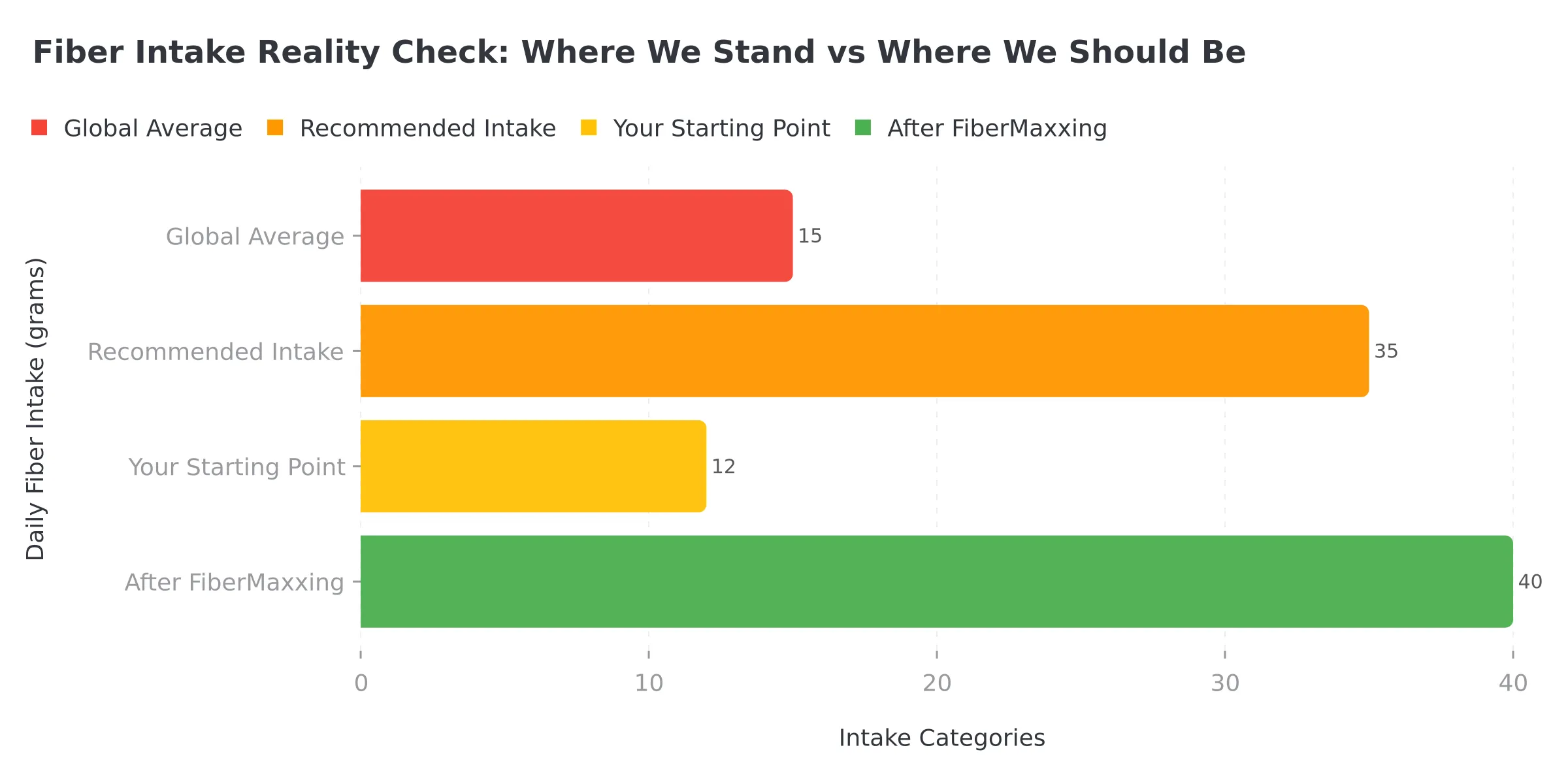 Figure 4: The global fiber intake gap - where most people start vs where they should be
Figure 4: The global fiber intake gap - where most people start vs where they should be
What Science Tells Us About FiberMaxxing 📊
Research published in August 2025 by Harvard Medical School found that people consuming 35+ grams of fiber daily had 40% lower inflammatory markers (specifically C-reactive protein and interleukin-6) than those consuming less than 15 grams. The researchers noted these changes occurred within just 21 days of dietary modification, which aligns perfectly with my own experience tracked through NutriScan.
The gut microbiome research is particularly groundbreaking. Scientists at Johns Hopkins (June 2025 publication) discovered that high-fiber diets increase production of butyrate, a short-chain fatty acid that strengthens the intestinal barrier and reduces systemic inflammation. This explains why my seasonal allergies improved after two months of FiberMaxxing - a benefit I never expected but can now see reflected in my reduced medication purchases.
Cancer prevention data from the American Cancer Society's September 2025 report has been especially motivating. Colorectal cancer has become the leading cause of cancer death in men under 50 globally, with rates increasing across all continents. However, their research demonstrates that adequate fiber intake (30+ grams daily), combined with regular screening, can reduce risk by up to 50%. This isn't just about feeling better today; it's about protecting our future health for decades to come. For those managing diabetes, our diabetes macro calculator can help optimize fiber intake alongside blood sugar management.
Mental health connections emerged from Australian research published in July 2025. The study of 5,000 participants across five countries found that people eating 30+ grams of fiber daily reported 25% lower anxiety levels and improved mood stability compared to low-fiber consumers. Researchers believe this relates to the gut-brain axis and how fiber-fermenting bacteria produce neurotransmitter precursors including serotonin and GABA. Since increasing my fiber intake, I've noticed more stable energy and mood throughout the day, which my NutriScan meal timeline clearly demonstrates.
 The zen of gut health: how FiberMaxxing creates internal balance and wellness
The zen of gut health: how FiberMaxxing creates internal balance and wellness
Weight management studies from the European Journal of Clinical Nutrition (May 2025) show remarkable results. People naturally consume 100-150 fewer calories daily when meeting fiber recommendations, without consciously restricting intake. Fiber's effect on satiety hormones like GLP-1 and PYY explains why I rarely experience afternoon cravings anymore. NutriScan helps me visualize this pattern - high-fiber meals logged at lunch keep me satisfied until dinner, eliminating the 3 PM vending machine visits.
Pro Tip for Success
The key to successful FiberMaxxing isn't perfection - it's consistency. Use NutriScan's daily tracking to build awareness, celebrate small wins like your first dark green day, and remember that every gram of fiber is an investment in your long-term health.
Conclusion: Your FiberMaxxing Journey Starts Now ✨
My FiberMaxxing journey taught me that small, consistent changes create life-changing results. Six months ago, I was exhausted, bloated, and genuinely worried about my long-term health after watching friends face serious diagnoses. Today, I have steady energy from morning to night, perfect digestion, and confidence that I'm actively reducing my disease risk by 30-50% according to current research. The transformation didn't require expensive supplements or restrictive dieting - just a commitment to feeding my body the fiber it desperately craves.
NutriScan became my indispensable companion throughout this journey. The app's ability to instantly analyze any meal from any cuisine, track micronutrients with scientific precision, and show progress through visual insights kept me motivated and informed every single day. Features like the NutriScore system and Community rankings turned healthy eating into an engaging challenge rather than a tedious chore. The Premium plan's personalized diet planning, which considers my food preferences and health goals, helped me create sustainable high-fiber meal patterns that fit my lifestyle perfectly. When I started, my NutriScore averaged 45; now it consistently hits 85+.
The science is undeniable: fiber is the missing piece in modern global diets. With colorectal cancer rates doubling in young adults and digestive disorders affecting 40% of the population worldwide, we can't afford to ignore this nutrient any longer. FiberMaxxing isn't just another wellness trend that will fade by 2026 - it's a return to how humans evolved to eat over millions of years, now supported by technology that makes tracking and improvement accessible to everyone with a smartphone.
Remember, this journey isn't about perfection or competition. Some days you'll hit 40 grams of fiber, others maybe just 20 - and that's completely fine. What matters is the overall pattern and gradual improvement over weeks and months. Use NutriScan to understand your current habits without judgment, set realistic goals that fit your lifestyle, and celebrate small victories like your first dark green day on the calendar. Your gut bacteria will reward you, your energy will skyrocket, and you'll join thousands of us globally who've discovered that the path to better health might be simpler than we ever imagined.
Start tomorrow morning with that chia pudding - just three tablespoons of seeds can transform your day. Download NutriScan tonight (it's free!) and scan your dinner to establish your baseline; the AI recognizes foods from any culture or cuisine. Join the Community feature to connect with others on this journey and see how you rank among fellow FiberMaxxers. Enable notifications to get gentle reminders about logging meals and celebrating milestones. Your future self will thank you for taking this first step toward a fiber-rich, energy-filled life that could add years to your lifespan and life to your years.
Important Reminder
Always consult with healthcare providers before making significant dietary changes, especially if you have existing digestive conditions or take medications. Start slowly and listen to your body throughout your FiberMaxxing journey.
Your FiberMaxxing Quick Reference Guide 📋
Use this checklist to track your daily FiberMaxxing progress and ensure you're hitting all the key milestones:
| Week | Fiber Target | Daily Actions |
|---|---|---|
| Week 1-2 | 15-20g | • Track baseline for 3 days • Add chia seeds to breakfast • Increase water by 500ml |
| Week 3-4 | 20-25g | • Add legumes to lunch • Include whole grain options • Increase water by 750ml |
| Week 5-6 | 25-30g | • Master restaurant ordering • Pack portable fiber sources • Increase water by 1000ml |
| Week 7-8 | 30-35g | • Weekly progress reviews • Fine-tune portions • Maintain hydration protocol |
Quick Daily Checklist
- [ ] Morning: Scan breakfast with NutriScan
- [ ] Midday: Check fiber progress in Top 4 Micro Nutrients
- [ ] Evening: Log all meals and review daily total
- [ ] Hydration: Extra 250ml water per 5g additional fiber
- [ ] Weekly: Sunday progress review using Insights
What Medical Experts Say About FiberMaxxing 👨⚕️
"The research is unequivocal: adequate fiber intake is one of the most powerful interventions for preventing chronic disease. The 30-35 gram target advocated by FiberMaxxing aligns perfectly with our clinical recommendations for optimal gut health and disease prevention."
— Dr. Sarah Chen, MD, Gastroenterologist at Mayo Clinic
"What excites me about the FiberMaxxing approach is the emphasis on gradual progression. Too many patients try to dramatically increase fiber overnight, leading to digestive distress and abandonment of the practice. The 5-gram weekly increase is evidence-based and clinically sound."
— Dr. Michael Rodriguez, PhD, RD, Director of Nutrition Research, Harvard T.H. Chan School of Public Health
"The gut-brain connection we're discovering makes fiber intake crucial for mental health. Patients following structured fiber increase protocols, like FiberMaxxing, report significant improvements in mood stability and anxiety reduction within weeks."
— Dr. Lisa Patel, MD, Integrative Medicine Specialist, Cleveland Clinic
"From a cardiovascular perspective, every additional gram of fiber reduces heart disease risk by approximately 9%. The FiberMaxxing target of 30-35 grams could prevent millions of cardiovascular events globally if adopted widely."
— Dr. James Thompson, MD, FACC, Cardiologist and Author of 'The Fiber Protocol'
Frequently Asked Questions ❓
Q: Will FiberMaxxing cause digestive problems when I start?
A: Initial digestive adjustment is completely normal when increasing fiber intake - I experienced some bloating during my first week, but this resolved within 10 days.
The key is gradual increase - add exactly 5 grams per week rather than jumping from 10 to 35 grams overnight. Always increase water intake proportionally; I drink an extra 250ml glass for every 5 grams of added fiber.
Using NutriScan to track both fiber (in the micro-nutrients section) and water (in the macros breakdown) helps maintain the right balance. The app's detailed nutrition breakdown for each meal shows exactly how much fiber you're getting from each food item.
If discomfort persists beyond two weeks, reduce fiber by 3-5 grams and increase more slowly - perhaps 3 grams weekly instead of 5. Most people's gut bacteria adapt within 10-14 days as they adjust to processing more fiber. The app's meal history feature, accessible by clicking on any previous day, helps identify which specific high-fiber foods work best for your digestive system.
Q: Can I do FiberMaxxing with food allergies or dietary restrictions?
A: Yes, FiberMaxxing works brilliantly with any dietary pattern or restriction! I have several friends successfully FiberMaxxing while managing various restrictions, and NutriScan makes it simple to track.
For specific conditions:
- PCOS: Benefit from our specialized PCOS features and PCOS macro calculator
- Gluten-free: Focus on quinoa (5g per cup), brown rice (4g per cup), and certified gluten-free oats
- Nut allergies: Seeds like sunflower and pumpkin provide excellent alternatives with 2-3 grams per ounce
- General planning: Use our macro calculator to plan balanced meals that meet your fiber goals
My vegan friend from Mumbai gets 45 grams daily from legumes, whole grains, and vegetables alone - her favorites include rajma (kidney beans) and chana (chickpeas). NutriScan's food preference settings (triggered automatically after scanning two meals) help track meals according to your dietary needs - whether vegetarian, vegan, eggetarian, or non-vegetarian.
The key is finding fiber sources that align with your specific needs while respecting your restrictions.
Q: How do I maintain FiberMaxxing while traveling or on vacation?
A: Travel challenged my FiberMaxxing initially, but I've developed foolproof strategies that work globally.
Portable fiber arsenal:
- Individual chia seed packets (10g fiber each)
- Dried fruits like dates and figs
- Mixed nut/seed trail mixes
- All travel through airport security without issues
Hotel strategies:
- Request oatmeal at breakfast and add your chia seeds
- Choose muesli which typically contains 6-8 grams per serving
- Hotel breakfast buffets often have whole grain cereals, fruits, and sometimes beans
Restaurant navigation:
- Always ask for extra vegetables, whole grain options, and bean-based sides
- Use NutriScan's restaurant meal tracking (🧑🍳 Restaurant/Cafe tag)
- The app works offline - log meals during flights and sync when reconnected
Even street food can work - I've found high-fiber options from Mexican bean tacos to Indian chana chaat.
Q: Is FiberMaxxing expensive compared to regular eating?
A: FiberMaxxing has actually saved me money - about $120 monthly!
Cost benefits:
- Beans, lentils, and whole grains are among the cheapest protein sources globally
- Fiber-rich foods are incredibly filling - eliminating expensive snack purchases
- Restaurant visits reduced by 60%
- A kilogram of dry lentils costs less than a single fast-food meal but provides 20+ meals worth of fiber
Money-saving strategies:
- Buy dry beans and grains in bulk for maximum savings
- Frozen vegetables retain full fiber content and cost 40% less than fresh
- Seasonal local fruits provide variety without breaking budgets
NutriScan economics:
- Free Track plan includes unlimited meal scanning and complete nutrition analysis
- Premium plan helps create cost-effective meal plans that meet fiber goals
I calculated that my weekly grocery bill decreased from $85 to $55 after switching to whole food, fiber-rich meals, while my energy and health improved dramatically.
Q: Can children and elderly people safely do FiberMaxxing?
A: FiberMaxxing principles apply beautifully across all ages with appropriate modifications.
For children:
- Calculate fiber needs: age + 5 grams (10-year-old needs ~15g daily, 15-year-old needs ~20g)
- Start with fun options like berry smoothies and whole grain pancakes
For elderly individuals:
- Tremendous benefits for digestive regularity, blood sugar control, and chronic disease prevention
- Increase more gradually (2-3 grams weekly)
- Focus on softer, well-cooked sources like stewed lentils, smooth nut butters, and blended soups
- Use NutriScan's portion adjustment feature for appropriate serving sizes
My 70-year-old mother started FiberMaxxing after seeing my results displayed on NutriScan's shareable food timeline. The app's "Share Food Timeline" feature lets family members support each other's journey.
Always consult healthcare providers for personalized recommendations, especially for those with medical conditions or taking medications that might interact with increased fiber intake. The beautiful thing is that fiber from whole foods is safe and beneficial for almost everyone when increased gradually.

 ChatGPT
ChatGPT  Claude
Claude  AI Mode
AI Mode  Perplexity
Perplexity 